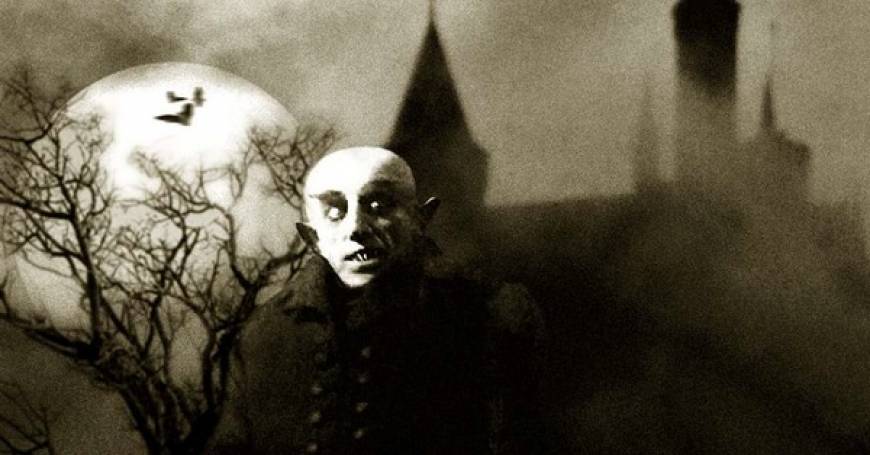
PHOTO: ranker.com
In 1887, Irish author Bram Stoker published his Gothic horror novel, Dracula. It tells the story of vampire Count Dracula’s attempt to move from Transylvania to England in order to find fresh blood and spread the curse of the undead.
The story of Dracula swept the world and has never left the human psyche since. We’ve been fascinated with vampires for years, from adaptions of his novel like Nosferatu the Vampyre in 1979, BBC’s Count Dracula in 1977, to the film Van Helsing in 2004. Of course, there’s been other adaptions, too, like Twilight, the Vampire Diaries, Vampire Academy, Interview With The Vampire… you get the picture.
It’s obvious humans love dark stories about the undead, but we’ve been loving those stories long before Bram Stoker ever penned his first word in his novel, Dracula. He got his inspiration from several places, including the infamous Vlad the Impaler, the Countess of Blood, and the popular folklore traditions about vampires that pervaded Transylvania and its surrounding regions.
Vlad the Impaler

PHOTO: wikimedia
Vlad the Impaler has been commonly cited as the inspiration for Bram Stoker’s Dracula. His full name was Vlad II Draculae, or “Son of the Dragon”, which is where Bram Stoker got his name for Dracula.
Vlad the Impaler was famous for his cruelty. His practices probably inspired a lot of the dark tales of supernatural influences and horrific torture normally associated with the classic vampire. He’s famous for nailing Ottoman officials’ turbans to their head, impaling hundreds of thousands of people, roasting children and feeding them to their mothers, washing his hands in the blood of his victims, and, in some stories, dipping his bread in bowls of it. Pretty vampiric, right?
The Countess of Blood

PHOTOS: evilladies.com
Elizabeth Bathory, born August 7th, 1560, is one of the lesser-known inspirations for vampire myths and, thus, Bram Stoker’s Dracula. In fact, she’s often called “Lady Dracula” by many sources, and for good reason. Elizabeth Bathory is still, to date, the most prolific female serial killer of all time.
Bathory had a penchant for torturing young girls. She had a whole torture chamber set up in her castle of Csetje, and liked to torture the female servants there by jamming pins and needles under their nails and covering them with honey and leaving them to be attacked by insects. When that didn’t satisfy her thirst for blood, she began to abduct peasant girls and go to insanely sadistic lengths to kill them. It’s recorded that she would often bite chunks out of the girls’ face and arms, and believed that drinking their blood would make her immortal. She was only caught when she escalated to going through elaborate, deceptive means to lure pretty girls from ruling families in Transylvania.
Vampires in Folklore
Now, going beyond the historical people that inspired Bram Stoker to write the most famous vampire story of all time, there’s a lot to be said about the tradition of the vampire in folklore across the world – mostly in Eastern Europe, but there’s a few other places we find Vampires, too.
“There are clear foundations for the vampire in the ancient world, and it is impossible to prove when the myth first arose. There are suggestions that the vampire was born out of sorcery in ancient Egypt, a demon summoned into this world from some other.” – Matthew Beresford, Author of From Demons to Dracula: The Creation of the Modern Vampire Myth.
There’s also stories about vampire-like creatures called Jiangshi in Chinese mythology, who drain the life energy of their victims, and the Tibetan Book of the Dead contains stories about blood drinking deities, so it’s clear that vampires, for whatever reason, are a popular folktale.
Dracula, though, is based in Romania, where legends of vampires were, and still are, a big deal. In early Romania, any bad event was blamed on a vampire. Villagers often unearthed graves. Common people mistook natural process for supernatural phenomenon. Coffins that were well sealed and buried in winter delayed decomposition. Bodies might bloat and force blood into the mouth, causing villagers to think that the body had just been up and walking around and had probably claimed a fresh victim.
![The famous "Vampire of Venice" with a brick stuck in the jaw. [PHOTO: livescience]](https://historythings.com/wp-content/uploads/2016/09/vampire-120530.jpg)
The famous “Vampire of Venice” with a brick stuck in the jaw. [PHOTO: livescience]
![Another suspected Vampire grave. [PHOTO: livescience]](https://historythings.com/wp-content/uploads/2016/09/vampire-grave-120530.jpg)
Another suspected Vampire grave. [PHOTO: livescience]
In fact, in one article, written in 2005 people are still living in the shadow of Dracula today. It details the story of a man who was arrested in 2004 for digging up the body of his family member and performing an ancient anti-vampire ritual on it. He and his family believed that their relative had become a vampire after death and was haunting them from the grave.
“If we hadn’t done anything, my wife, my son and my daughter-in-law would have died. That is when I decided to `unbury’ him. I’ve seen these kinds of things before.”When we took him out of the grave, he had blood around his mouth. We took his heart and he sighed when we stabbed him. We burned it, dissolved the ash into water and the people who had fallen sick drank it. They got better immediately. It was like someone took away all their pain and sickness.”We performed a ritual that is hundreds of years old. We had no idea we were committing a crime. On the contrary, we believed that we were doing a good thing because the spirit of Petre was haunting us all and was very close to killing some of us. He came back from the dead and was after us.”
It’s clear that the story of Dracula, whether it takes the form of sparkling, pretty vampires, or the much longer, darker shadow cast in present-day Romania, still haunts the human mind today.

